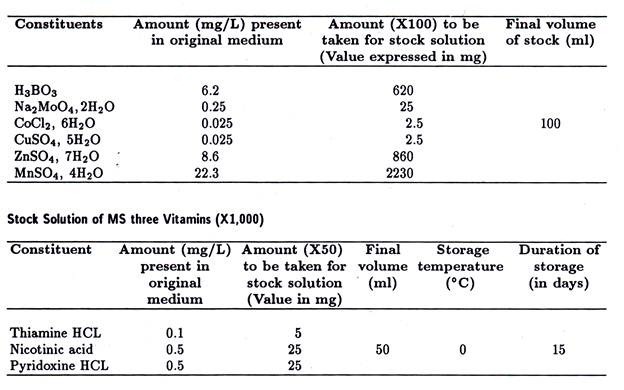ADVERTISEMENTS:
In this article we will discuss about:- 1. Historical Review of Cyanocobalamin 2. Chemical Structure of Cyanocobalamin 3. Properties and Distribution 4. Functions 5. Deficiency 6. Daily Requirement.
Historical Review of Cyanocobalamin:
(Vitamin B12, Cobamide) (Antipernicious Anaemia Factor, Extrinsic Factor of Castle)
In 1948 Smith and Parker isolated cyanocobalamin from the liver. In 1955 its complex structure was determined.
Chemical Structure of Cyanocobalamin:
ADVERTISEMENTS:
The central portion of the molecule consists of four reduced and extensively substituted pyrrol rings surrounding a single cobalt atom. The central structure is referred to as a corrin ring and is similar to that of the poryphyrins except that two pyrrol rings are joined directly.
Below the ring system it contains the base dimethyl-benziminazole linked with ribose and phosphoric acid, so that one end is connected to the central cobalt atom and the other through ribose phosphate and aminopropanol to a side chain on ring IV of the tetrapyrrole nucleus.
Different cobala-min compounds possessing common prosthetic group have vitamin B12 activity. A cyanide group (-CN) co-ordinately bound to cobalt atom may be removed giving the compound cobalamin. Addition of cyanide gives cyanocobalamin, substitution of cyanide with hydroxyl group (-OH) gives hydroxycobalamin, B12a and with nitro group-nitrocobalamin.
All of these have similar biologic action although hydroxycobalamin is more active enzymatically. In vitamin B12 containing coenzymes, cobamides, and the cyanide (cyano) group is replaced by an adenine deoxy nucleoside. Co is present in this prosthetic group in a similar way as Fe in haemoglobin. The empirical formula of vitamin B12 has been suggested as C63H88O14N14PCo.
Properties and Distribution of Cyanocobalamin:
Red crystalline substance, soluble in water. Contains metalloporphyrin nucleus and cobalt (4.5%). Molecular weight is 1,500 approximately.
Distribution:
Absent in plants, but present in almost all animal tissues. Rich sources are liver (1 unit of liver extract contains approximately 1 micro gram of B12), kidney, egg, beef extract, milk etc. It is synthesized by microfloral fermentation in the alimentary tract of ruminants. This vitamin is found in the fungus Streptomvces griseus. Hence vitamin B12 is obtained as a by-product in the manufacture of Streptomycin.
Absorption and Excretion:
Absorption takes place from the ileum. Intrinsic factor (IF) present in normal gastric juice is essential for the proper absorption of B12. It is stored in the liver. From the liver it passes to the bone- marrow and helps in the maturation of red cells. The absorption and excretion have been studied by using Vitamin B12, containing radioactive cobalt. Vitamin B12 is excreted in the faeces and urine.
Functions of Cyanocobalamin:
i. Essential for the formation and maturation of red blood cells. Recent idea is that Vitamin B12 is Castle’s extrinsic factor, which combines with the intrinsic factor present in normal gastric juice and is absorbed. The intrinsic factor has not been identified as yet but is a non-dialysable, thermolabile substance possibly a mucoprotein.
ii. It plays an essential role in the synthesis of nucleic acid. Deficiency causes a disturbance of the deoxyribose nucleic acid metabolism.
iii. Increases the white cell count and the platelets through its action in the bone-marrow.
ADVERTISEMENTS:
ADVERTISEMENTS:
iv. Concerned with the maintenance of normal health and activity of certain parts of the nervous system. Vitamin B12 not only aires the pernicious anaemia but also the neurological manifestations of pernicious anaemia e.g., subacute combined degeneration of the spinal cord. [Folic acid cures only the pernicious anaemia]
v. As it helps in the growth of micro-organism called the Lactobacillus lactis so this vitamin can be assayed by studying the growth of this micro-organism.
vi. Biosynthesis of methyl group is increased by vitamin B12 and it is said that vitamin B12 plays an enzymatic role in one-carbon metabolism and synthesis.
vii. This vitamin has also a role in transmethylation process.
ADVERTISEMENTS:
viii. Formation of lipid from carbohydrate is influenced by vitamin B12.
ix. A coenzyme of vitamin B12 helps in isomerization (e.g., that of glutamic acid to β-methyl aspartate). This is clearly observed in the isomeric reaction where methyl malonyl CoA is converted to succinyl CoA.
x. Hyperglycaemia due to vitamin B12 deficiency can be corrected after administration of Vitamin B12 or glutathione (GSH).
Deficiency of Cyanocobalamin:
Pernicious macrocytic or megaloblastic anaemia is produced. Brings about hyperglycaemia, slow growth as well as nervousness and irritability are observed in pigs and rats.
ADVERTISEMENTS:
Deficiency might occur as a result of:
(a) Lack in diet,
(b) Lack of intrinsic factor as in pernicious anaemia,
(c) Defective absorption due to intestinal disease (malabsorption syndrome),
ADVERTISEMENTS:
(d) Infection with micro-organisms which have affinity for vitamin B12 and thus destroy it in the intestinal tract, and
(e) Other important features in vitamin B12 deficiency in man are mucosal atrophy and inflammation of tongue, mouth, etc. degenerative lesion of the posterior and lateral columns of the spinal cord.
Daily Requirement of Cyanocobalamin:
The requirement is very small. A daily intake of 1.0 µ gm is sufficient to prevent deficiency. However, it is not known accurately as yet.

